Advancements in Triboelectric Nanogenerators (TENGs) for Intelligent Transportation Infrastructure: Enhancing Bridges, Highways, and Tunnels
- PMID: 37514929
- PMCID: PMC10384071
- DOI: 10.3390/s23146634
Advancements in Triboelectric Nanogenerators (TENGs) for Intelligent Transportation Infrastructure: Enhancing Bridges, Highways, and Tunnels
Abstract
The development of triboelectric nanogenerators (TENGs) over time has resulted in considerable improvements to the efficiency, effectiveness, and sensitivity of self-powered sensing. Triboelectric nanogenerators have low restriction and high sensitivity while also having high efficiency. The vast majority of previous research has found that accidents on the road can be attributed to road conditions. For instance, extreme weather conditions, such as heavy winds or rain, can reduce the safety of the roads, while excessive temperatures might make it unpleasant to be behind the wheel. Air pollution also has a negative impact on visibility while driving. As a result, sensing road surroundings is the most important technical system that is used to evaluate a vehicle and make decisions. This paper discusses both monitoring driving behavior and self-powered sensors influenced by triboelectric nanogenerators (TENGs). It also considers energy harvesting and sustainability in smart road environments such as bridges, tunnels, and highways. Furthermore, the information gathered in this study can help readers enhance their knowledge concerning the advantages of employing these technologies for innovative uses of their powers.
Keywords: energy harvesting; intelligent road environments; self-powered sensors; structural health monitoring; triboelectric nanogenerators (TENG).
Conflict of interest statement
The authors declare no conflict of interest.
Figures
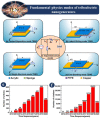
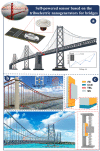
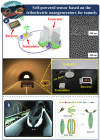
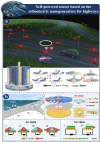

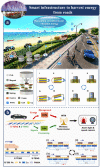

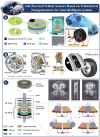
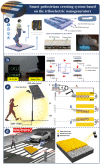

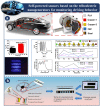

Similar articles
-
Environmental Energy Harvesting Adapting to Different Weather Conditions and Self-Powered Vapor Sensor Based on Humidity-Responsive Triboelectric Nanogenerators.ACS Appl Mater Interfaces. 2019 Feb 13;11(6):6143-6153. doi: 10.1021/acsami.8b21477. Epub 2019 Feb 1. ACS Appl Mater Interfaces. 2019. PMID: 30666864
-
Magnetic Material in Triboelectric Nanogenerators: A Review.Nanomaterials (Basel). 2024 May 8;14(10):826. doi: 10.3390/nano14100826. Nanomaterials (Basel). 2024. PMID: 38786783 Free PMC article. Review.
-
Structural Flexibility in Triboelectric Nanogenerators: A Review on the Adaptive Design for Self-Powered Systems.Micromachines (Basel). 2022 Sep 23;13(10):1586. doi: 10.3390/mi13101586. Micromachines (Basel). 2022. PMID: 36295939 Free PMC article. Review.
-
Triboelectric Nanogenerators for Harvesting Diverse Water Kinetic Energy.Micromachines (Basel). 2022 Jul 29;13(8):1219. doi: 10.3390/mi13081219. Micromachines (Basel). 2022. PMID: 36014139 Free PMC article. Review.
-
Flame-Retardant Textile-Based Triboelectric Nanogenerators for Fire Protection Applications.ACS Nano. 2020 Nov 24;14(11):15853-15863. doi: 10.1021/acsnano.0c07148. Epub 2020 Nov 6. ACS Nano. 2020. PMID: 33155470
References
-
- Matin Nazar A., Idala Egbe K.-J., Abdollahi A., Hariri-Ardebili M.A. Triboelectric nanogenerators for energy harvesting in ocean: A review on application and hybridization. Energies. 2021;14:5600. doi: 10.3390/en14185600. - DOI
-
- Nazar A.M., Jiao P., Zhang Q., Egbe K.-J.I., Alavi A.H. A new structural health monitoring approach based on smartphone measurements of magnetic field intensity. IEEE Instrum. Meas. Mag. 2021;24:49–58. doi: 10.1109/MIM.2021.9448251. - DOI
-
- Matin Nazar A., Egbe K.-J.I., Jiao P. Hybrid Piezoelectric and Triboelectric Nanogenerators for Energy Harvesting and Walking Sensing. Energy Technol. 2022;10:2200063. doi: 10.1002/ente.202200063. - DOI
-
- Egbe K.-J.I., Nazar A.M., Jiao P., Yang Y., Ye X., Wang H. Vibrational turbine piezoelectric nanogenerators for energy harvesting in multiphase flow fields. Energy Rep. 2021;7:6384–6393. doi: 10.1016/j.egyr.2021.09.085. - DOI
-
- Varmaghani A., Matin Nazar A., Ahmadi M., Sharifi A., Jafarzadeh Ghoushchi S., Pourasad Y. DMTC: Optimize energy consumption in dynamic wireless sensor network based on fog computing and fuzzy multiple attribute decision-making. Wirel. Commun. Mob. Comput. 2021;2021:1–14. doi: 10.1155/2021/9953416. - DOI - PubMed
Publication types
LinkOut - more resources
Full Text Sources
Research Materials

